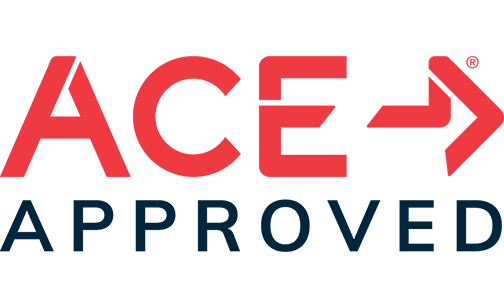A Look at Superfoods: Salmon
- Lisa Wright Burbach
- Oct 18, 2016
- 4 min read

TRIVIA & TIDBITS
The Chinook Salmon is Oregon’s State fish.
Wild salmon are pinker because of their diet which is richer in Astaxanthin, like eating lots of carrots and turning orange.
People who eat foods high in Omega 3 tend to have longer Telomeres. Telomeres are protective caps of repetitive DNA at the end of chromosomes and the length of telomeres. Telomeres shortening is associated with mortality, aging, and related diseases.
Plants with Omega 3 are healthy, but have Alpha Linolenic Acid (ALA) and not EPA and DHA found in fatty fishes. EPA/DHA is utilized in our bodies “as is”, but ALA must be converted by our bodies in to EPA/DHA before being utilized. In the conversion process only about 4% of the Omega-3 are converted to DHA.
Wild fish have healthier Omega 3 profiles, are higher in vitamin D, are naturally pinker (more astaxanthin), lower in saturated fats, and not as fatty in general as most farm raised fish.
Worried about safe fish? Here is a pocket resource guide from Monterey Bay Aquarium.
Wild Caught Alaskan Salmon has the lowest mercury, below 216 parts per billion.
WHAT’S IN IT FOR ME?
Omega 3 Fatty Acids – The benefits of Omega 3 fatty acids are so numerous that I have provide a link to help get you started learning about it. I recommend Dr. William Sears book The Omega-3 Effect.
B12 – Maintains healthy nerves and red blood cells, maintain energy levels, is important for healthy cardiovascular health, keeps skin and hair healthy, may help mood.
Vitamin D – Helps regulate calcium and phosphorus absorption, maintains health teeth and bones, facilitates normal immune function, improved resistance against certain diseases, may help fight depression and help with weight loss
Astaxanthin – Called the King of Carotenoid (the pigments that give many healthy foods their color) helps keep a strong brain, healthy eyes, supports the immune system, helps keep the lining of the blood vessels smooth, help keep lipids in balance, protects skin from UV damage, and protects cell membranes.
Protein – Protein serves as building blocks for muscles, bones, cartilage, skin, hormones, and enzymes. They increases satiety helping us feel more full.
Iodine – crucial to thyroid function and cell metabolism.
Coline – important for normal liver function, supports normal nerve function, brain development, muscle movement and healthy metabolism.
B5 – is beneficial towards alleviating asthma symptoms, hair loss, and helps with allergies, stress, anxiety as well as beneficial to a healthy cardiovascular system and respiratory system.
Biotin – (B7) helps thicken nails and hair, helps metabolic function, digestive health, important in fetal development, may improve glucose/ blood sugar balance, beneficial to the nervous system, and improves cholesterol levels.
Potassium – Potassium, Helps the heart, kidneys, cells, digestive system, muscles, and regulates flood balance and blood pressure. Potassium has may help reduce the risk of stroke.
Manganese – Benefits bone formation, balance of sex hormones, important in thyroid function, absorption of calcium, metabolism of fat and carbohydrates, helps the immune system, and is important to function of connective tissues.Selenium – Our bodies need only trace amounts, but it plays an important role of preventing cellular damage from free radicals and supports a strong immune systemPhosphorus – Works closely with calcium for health bones and teeth, is necessary to make protein for growth and repair of cells, important for muscle contractions, steady heartbeat, helps the body make ATP.
RECIPES
Miso Glazed Broiled Salmon – The Kitchen/Jacques Pepin
Easy Salmon Recipes – Food and Wine Magazine
Crispy Salmon with Fennel Slaw – Food and Wine/ Chef Hugh Acheson
Salmon with Brown Sugar and Mustard Glaze – Bobby Flay
25 Best Salmon Recipes – Coastal Living
A look at Superfoods
What is a Superfood? A superfood is defined as a nutrient-rich food considered to be especially beneficial for health and well-being – Mcmillian Dictionary.
Dr. William Sears, in his book Prime Time Health, describes Superfoods as:
Nutrient Dense
Nutrients that have proven benefits
Made by nature, not a factory
Taste good & satisfying
May be able to be prepared in a variety of ways
Contains no ingredients harmful to health
While we receive vitamins, minerals, proteins, and essential fats from our foods, some foods have been proven to provide extra health benefits, these foods are the superfoods. They have properties that may be anti-inflammatory, anticancer, and anti-Alzheimer, lower highs, and raise lows in our body.
Let’s be clear, when I say superfood I do not mean magical foods that cure-all, nor do I mean a diet consisting of one food, like the old “Grapefruit Diet”. The truth is, that these foods work best when part of a healthy, whole food, plant-based diet full of variety and by diet I mean lifestyle eating habits, not a short-term solution. Just eat food that rots, but eat it before it does!
Sources
Inflammation Solution By Dr. William Sears copyright 2015
Prime Time Health – William Sears, MD and Martha Sears RN
Lisa received her Health Coach Certification from the Dr. Sears Wellness Institute, founded by world-renowned physician and author, Dr. William Sears. The Institute is a leader in science-based health and wellness education that focuses on the four pillars of health; Lifestyle, Exercise, Attitude and Nutrition (L.E.A.N.). A certification by the Dr. Sears Wellness Institute is obtained only after completing the extensive course work and meeting all requirements. Once certified, a Health Coach possesses the knowledge, tools and resources to make a positive difference in the health of others.
The information in this blog is educational and not meant to diagnose, treat, or mitigate symptoms.





Comments